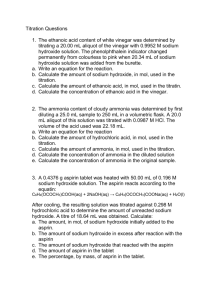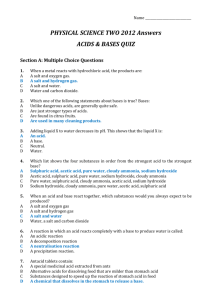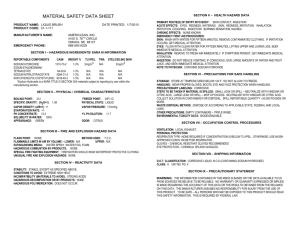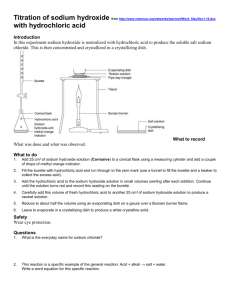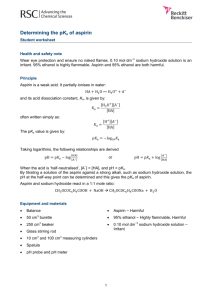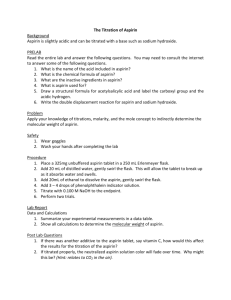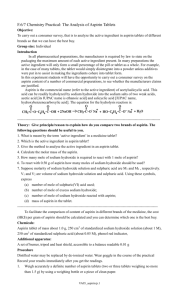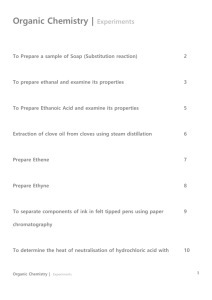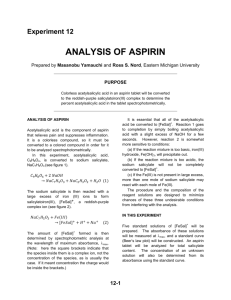EXPERIMENT 20
advertisement
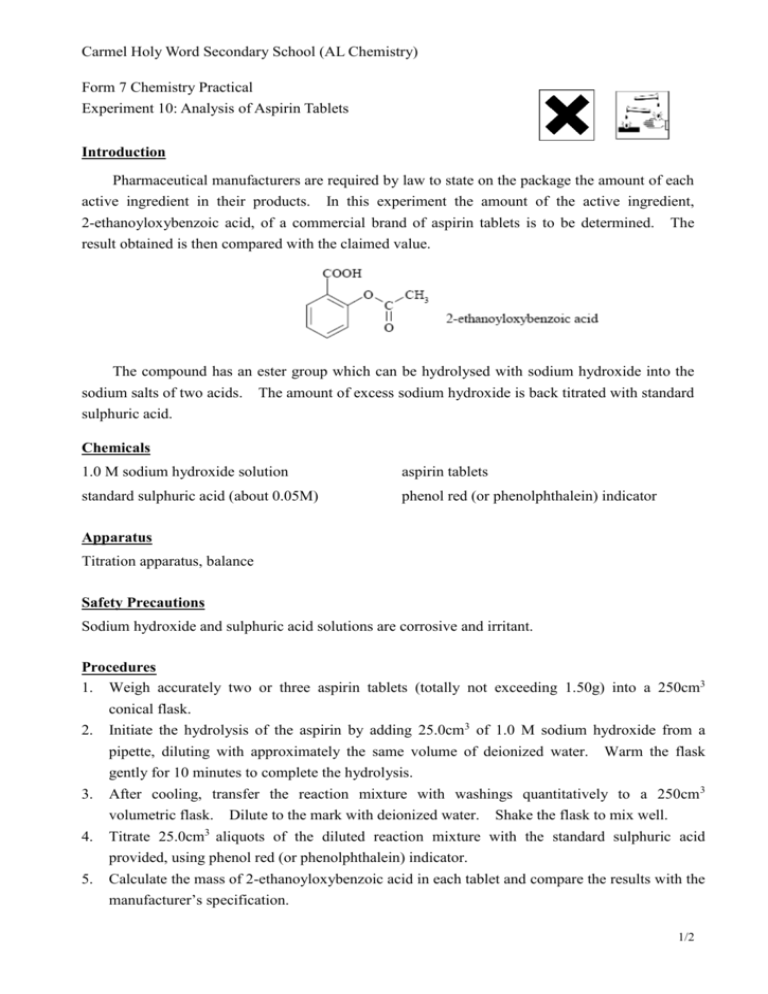
Carmel Holy Word Secondary School (AL Chemistry) Form 7 Chemistry Practical Experiment 10: Analysis of Aspirin Tablets Introduction Pharmaceutical manufacturers are required by law to state on the package the amount of each active ingredient in their products. In this experiment the amount of the active ingredient, 2-ethanoyloxybenzoic acid, of a commercial brand of aspirin tablets is to be determined. The result obtained is then compared with the claimed value. The compound has an ester group which can be hydrolysed with sodium hydroxide into the sodium salts of two acids. The amount of excess sodium hydroxide is back titrated with standard sulphuric acid. Chemicals 1.0 M sodium hydroxide solution aspirin tablets standard sulphuric acid (about 0.05M) phenol red (or phenolphthalein) indicator Apparatus Titration apparatus, balance Safety Precautions Sodium hydroxide and sulphuric acid solutions are corrosive and irritant. Procedures 1. Weigh accurately two or three aspirin tablets (totally not exceeding 1.50g) into a 250cm3 conical flask. 2. Initiate the hydrolysis of the aspirin by adding 25.0cm3 of 1.0 M sodium hydroxide from a 3. 4. 5. pipette, diluting with approximately the same volume of deionized water. Warm the flask gently for 10 minutes to complete the hydrolysis. After cooling, transfer the reaction mixture with washings quantitatively to a 250cm 3 volumetric flask. Dilute to the mark with deionized water. Shake the flask to mix well. Titrate 25.0cm3 aliquots of the diluted reaction mixture with the standard sulphuric acid provided, using phenol red (or phenolphthalein) indicator. Calculate the mass of 2-ethanoyloxybenzoic acid in each tablet and compare the results with the manufacturer’s specification. 1/2 Carmel Holy Word Secondary School (AL Chemistry) Relevant Information Phenol red ---- pH range 6.8 (yellow) to 8.2 (red) Phenolphthalein ---- pH range 8 (colourless) to 11 (pink) Experimental Results Record the titration results in the table below: Titration 1 2 3 4 Initial reading / cm3 Final reading / cm3 Volume used / cm3 Mean volume used = Calculation Calculate the mass of 2-ethanoyloxybenzoic acid in 1 g of tablets. Questions 1. Write a balanced equation of hydrolysis of 2-ethanoyloxybenzoic acid by sodium hydroxide. 2. What harmful effects to human does aspirin have? 3. Explain why sodium hydroxide is used instead of concentrated sulphuric acid in the hydrolysis. 2/2



